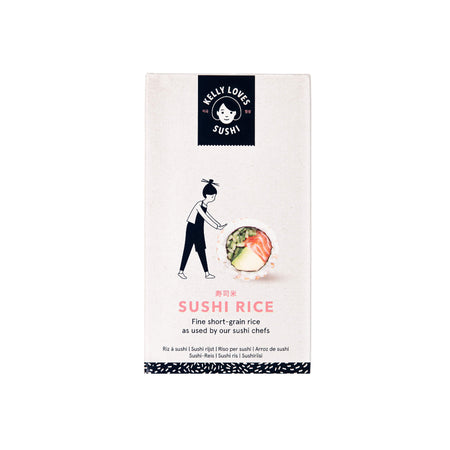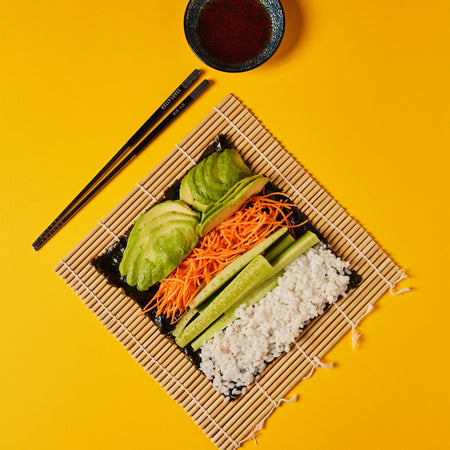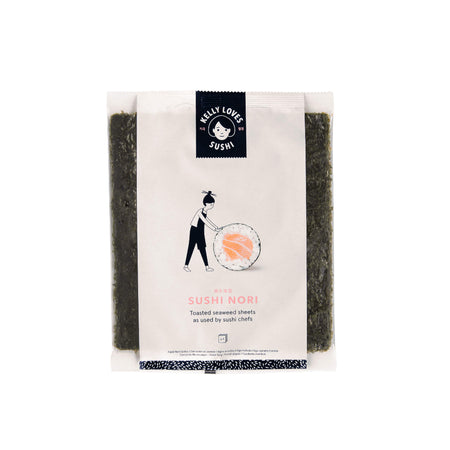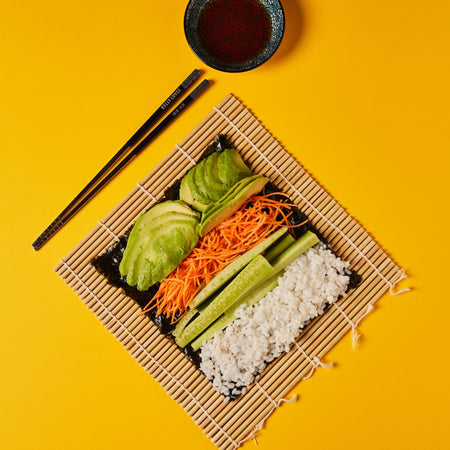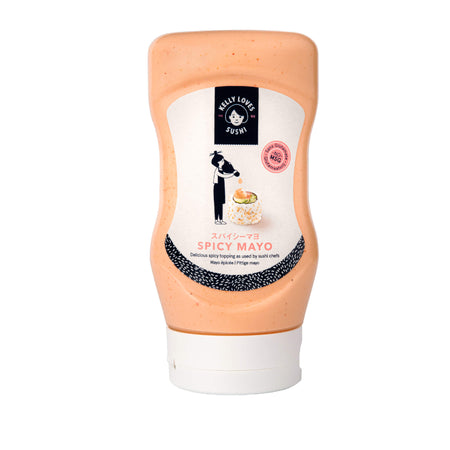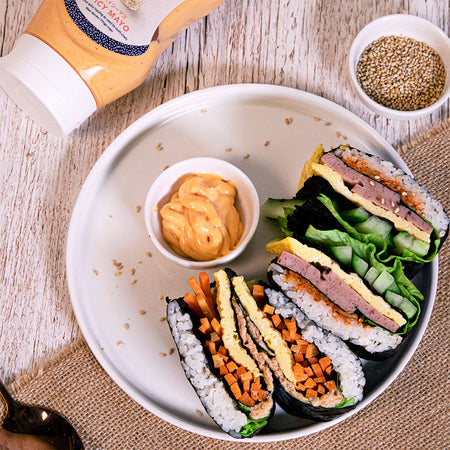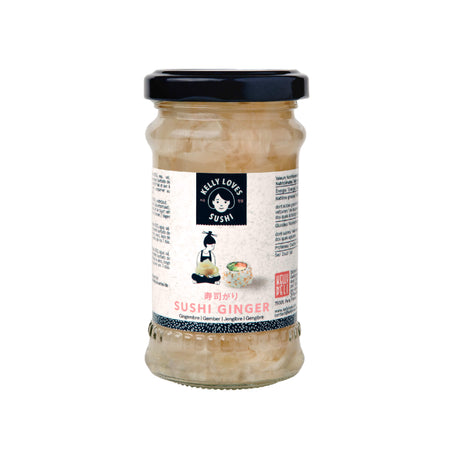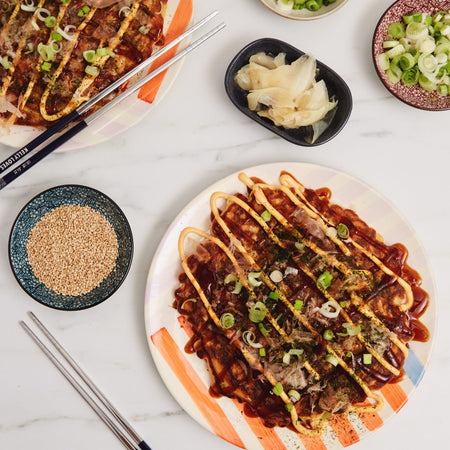Which soy sauce is best for sushi?
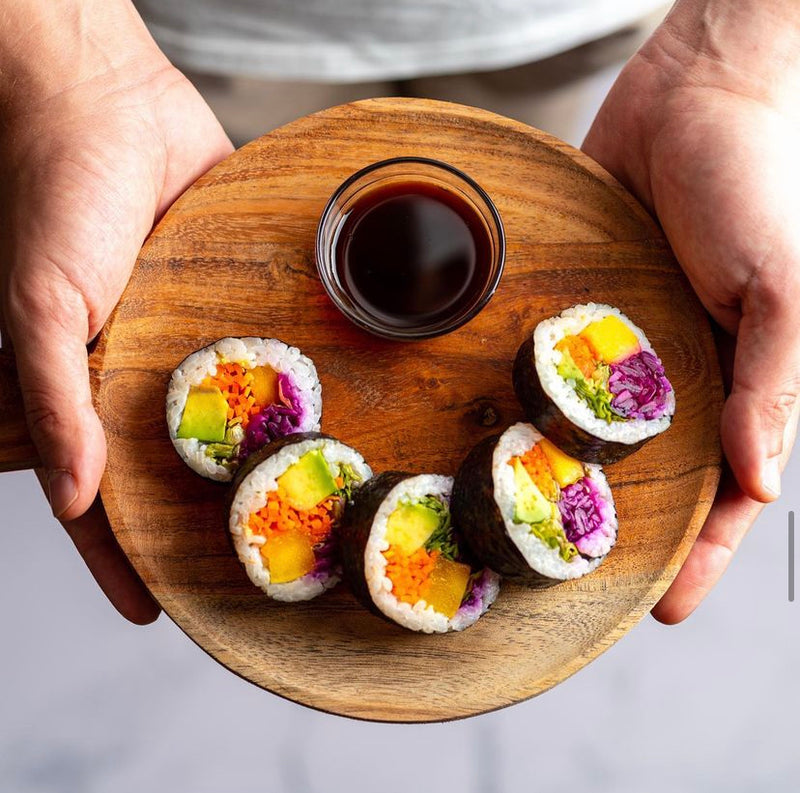
Choosing what kind of soy sauce you should use to gently dip the nori side or fish side of your sushi, can really make the difference. When eating sushi, you should match it with Japanese soy sauce, which has a distinctive taste compared to other soy sauces. The soy sauce you choose needs to be authentic for the best experience.
What are the different types of soy sauce?
Dark soy sauce
Let’s start by taking a closer look at the classic soy sauce. It’s rich and dark in colour and almost completely opaque. Its silky richness is due to the fact that it’s fermented for longer and contains more wheat than its lighter counterpart, making it a touch sweeter and less salty.
To test that it is indeed dark soy sauce, simply tilt the bottle one way and then gently back again. The soy sauce should coat the glass and trickle away more slowly when compared to light soy sauce. It’s worth noting here that Japanese soy sauce is thinner than Chinese soy sauce and best for dipping or brushing across sushi.
The dark soy sauce ‘tamari’ is often a favourite for dipping sushi in Japan due to it being less salty, with a rich umami flavour, as well as being used to make teriyaki sauce. It contains a high proportion of soybeans and can sometimes be made without wheat. Dark soy sauce often accompanies grilled meat and vegetables and in stews, so it’s a great all-rounder to have in your kitchen cupboard.
Light soy sauce
The name ‘light’ comes from the lighter colour compared to the dark soy sauce. Japanese light soy sauces can appear reddish brown or maple in colour. If you tilt the bottle, you’ll see that the light soy sauce is translucent.
Light Japanese soy sauces are often used in soups such as katsuo udon soup. If you need to watch your salt intake, choose a reduced salt soy sauce, which has less salt but maximum taste.
Sweet soy sauce
Sweet soy sauce is thick, syrupy sauce — a mixture of sugar and soy sauce. This variety gives a delicious, sticky, glimmering finish to stir-frys, meat and rice. You can use it while you’re cooking, or to finish. You can also add it to homemade marinades, or, of course, for dipping sushi in.
Which soy sauce is best for sushi?
So what soy sauce should you use for sushi? It’s ultimately down to personal preference. But each of the different types of soy sauce will bring something different to your sushi experience. When you see soy sauce required in a recipe, the standard to use is dark soy sauce. It’s also the traditional soy sauce of choice for dipping sushi in Japanese restaurants.
Soy sauce is a staple ingredient, not just for sushi, but for soups, salad dressings and marinades, to name a few - in fact, there's loads of ways to use soy sauce when cooking. So many people like to have a bottle of each type of soy sauce in the cupboard, to use as they need.
For sushi and sashimi fans looking for a sushi dipping sauce, the classic dark soy sauce is a must-buy. Just make sure that it’s high quality and authentic (that’s where we come in!). Remember that you still want to taste the natural flavours of the sushi, so ideally select a Japanese soy sauce and make sure that you don’t drench the sushi in sauce.
We hope that knowing a bit more about the different types of soy sauce helps you decide on the right one for you. If you’d like to learn about soy sauce etiquette when eating sushi, take a look at our guide on how to eat sushi.

